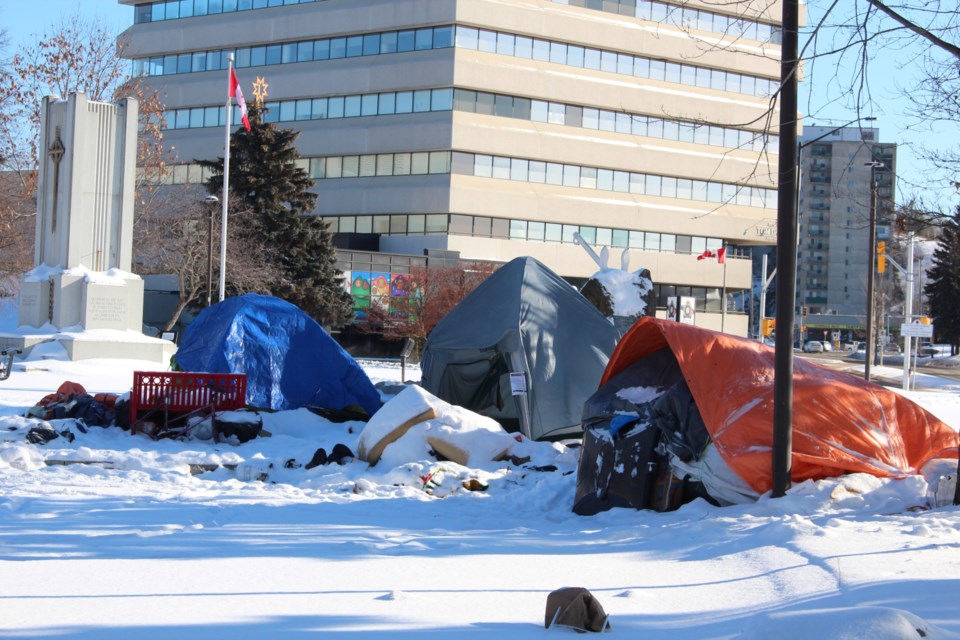The City of Greater Sudbury has made a concerted effort to tackle the local homelessness crisis, but the fact some of the people seeking housing end up back on the streets illustrates the challenges and complexities of the issue.
Ray Landry, co-ordinator of housing services of the Homelessness Network told Sudbury.com that this cycle of housing back to homelessness has much to do with the challenges of transitioning someone away from the life skills one must acquire to survive homelessness to the very different like skills one requires to be housed.
For those who have been homeless, particularly for long periods of time, there are certain behaviors or choices that do not fit well with societal norms for tenancy. Sometimes, proper management of a home was forgotten, or never taught. In other cases, the survival skills needed to manage homelessness are undesirable by the landlord or neighbours, and can often include undiagnosed or untreated mental health issues, as well as substance use disorders and the transactional relationships that develop through substance purchasing.
When someone who is homeless or in precarious housing (unstable housing) would like to find a place, their name is added to the co-ordinated access list (or by-name list) maintained by the City of Greater Sudbury.
As of Jan. 31, that list has a total of 177 names on the list of people waiting for housing. There are 10 living in an encampment (an area with a structure that the resident returns to regularly), and 62 unsheltered, meaning they are not or do not wish to stay at the shelter.
But 37 of those previously housed have returned to the by-name list.
The reasons these people are losing their housing can include behavioral adaptations, said Landry, but also, those who are housed can be intimidated into letting others in, to their own detriment.
“Some have had their spaces taken over by ‘quote unquote friends’; there's way too many takeovers going on,” said Landry. “In several cases, one person gets housing, they tend to be very generous with their friendships and want to be helpful to others, then others may move in and take over the space and the person loses control of their tendency.”
He also notes that this often has to do with “drug debts, drug dealing, and other untoward behavior.” People are forcing themselves in, and the tenant is being forced out.
The Homelessness Network, as well as the federal and provincial government, use a housing-first philosophy, supporting the housing process for anyone experiencing homelessness, regardless of addiction, mental-health issues, or any other impediments to working within the system, and focusing on stability in housing.
This is the reason it doesn’t matter to them how many times someone returns to the list, they are focused on supporting their clients by whatever means they can, including daily or weekly visits and helping their clients plan for success.
But as much as the network is supportive and offers what a person needs to manage their housing, it's still completely up to that individual to be a tenant and to abide by the standard rules of tenancy.
That’s why there is a need for supportive housing, said Landry, like the planned Lorraine Street facility, which will offer spaces for 40 people who are chronically homeless, with wraparound services to ease them into permanent community housing.
He said the facility means those who are unable to live independently will have a supportive home, and those who can manage will find more housing available to them. A domino effect, of sorts.
“It’s the flow through from the right level of care to the right level of need,” said Landry. “The more we can match that up to the right program, the better the results will be overall.”
“Not just for people who are homeless,” he said. “But the general population as well. There's a stagnation across the board, at every level.”
For more information about the City of Sudbury’s homelessness initiatives, click here.
Jenny Lamothe is a reporter with Sudbury.com. She covers the diverse communities of Sudbury, especially the vulnerable or marginalized, including the Black, Indigenous, newcomer and Francophone communities, as well as 2SLGBTQ+ and the downtown core.
